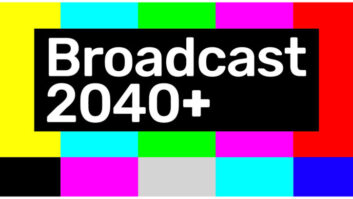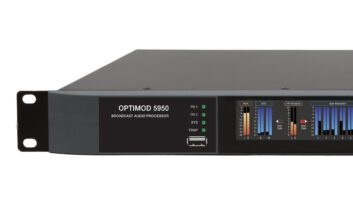As Radio World has reported, some AM stations in the United States are trying modulation-dependent carrier level operation, with FCC permission, as a means to save money on transmitter power bills. Techniques include the AMC algorithm. Reader J. Fred Riley comments here. He was a chief engineer for radio and TV stations, and worked for Continental Electronics for 26 years, primarily in the area of high-power broadcast (100 kW–1 MW).
I can’t hold it in any longer. This move to AMC is stunningly wrong. A careful analysis of the algorithm and results of AMC show that if 3 dB of AMC works for a broadcaster, they’re simply licensed for 3 dB too much power. AMC does not preserve the full PEP capability of the transmitter or the listener’s signal-to-noise ratio.
MDCL is also called Variable Carrier Power by the International Broadcasting Bureau. AMC is a BBC algorithm to save money at the expense of signal-to-noise ratio. On the other hand, keeping the full PEP of the transmitter can be achieved by a number of variants. And of those, CEC’s CCM (Controlled Carrier-Level Modulation) system is the most sophisticated.
Sophisticated means, in this case, power savings without audible artifacts. CCM looks only to keep the carrier high enough to support the negative peak modulation level; positive peaks are allowed to go to full PEP. And the inter-syllabic time delay between carrier level shifts of the CCM system results in a near-perfect power-consumption-reduction system that results in both power savings and preservation of the listener’s signal-to-noise ratio.
AMC lowers power consumption the most, no question. But it does so at a great cost to coverage. CCM, on the other hand, may actually increase coverage while saving 22% in a talk format or 16% in a hard rock format.
And, for those who think this is something new and miraculous, I refer them to January 1935 issue of QST, the ARRL Magazine. This is an amateur-radio version of a technique used by WGY in 1931! It is fair to say, however, that this technique did not become quite so easy to implement until the advent of transmitters coupled to DC. Once that hurdle was met, implementation became simple and elegant.
I delivered a paper to the IEEE Broadcast Technology Symposium some years ago wherein I compared the various power-savings technologies using variable carrier power. The conclusion was clear. If AMC works for you, you’re running too much power in the first place. But if you need to maintain coverage, you use a technique that maintains the full PEP capability of your transmitter. Further, because CCM only provides the carrier necessary to support negative peak modulation, if any asymmetry survives the processor, that is allowed to raise the PEP even more. And CCM prevents the receiver’s AGC from acting as an unwanted compressor by the inter-syllabic delay mentioned before.
I am happy to see my recommendation for the use of variable carrier power be put to use in the United States; it has been and is used on almost all HF broadcast stations. What appalls me is the move to use the worst of all possible variable carrier power systems.
It would be wrong not to point out two additional points:
A. The carrier does nothing except demodulate the sidebands. When PLLs and synchronous detection was difficult and costly to implement, there was no alternative. But synchronous detection is widely available, solves a host of problems and allows the (truly) useless carrier to be reduced by 20–26 dB while recovering a full-bandwidth AM signal.
B. The average RMS modulation level, despite all the advances in processor technology, has advanced from 30% in the 1960s to only 40% in 2012. If true power savings is really a major criterion, think how much power could be saved by using synchronous detection. The calculation of power savings is left for the reader.
J. Fred Riley is retired; he lives in Dallas. He adds that he is “trying to get some aluminum in the air to take advantage of the high sunspot numbers. Love SSB on 75 and CW on 40. And old friends here and there on 20M and 10M.”
Radio World welcomes other points of view. Write to [email protected].
Related:
Crawford Saving Money With MDC












